Want to learn more about the potential benefits of using Epsom salt as a fertilizer for your palm trees? It may surprise you how this inexpensive and readily available product could be just what your tropical foliage needs for better growth, healthier leaves, and improved root health. Before delving into the use of Epsom salt on palms, it’s important to understand the usefulness and possible harm that this substance contains. As such, we’ll be taking a closer look at exactly what Epsom salt is all about; its formulas, features, and application methods included!
What are the Special Characteristics of Palm Trees?
Palm trees are a type of tree that possess several special characteristics. One characteristic is their beautiful, fan-shaped fronds that provide lush shade in tropical climates. Furthermore, palm trees have unique root systems. Instead of growing large horizontal roots like other trees, they grow small fibrous and shallow lateral roots called “pneumatophores”. This allows them to easily absorb nutrients from the soil without competing with surrounding plants for resources.
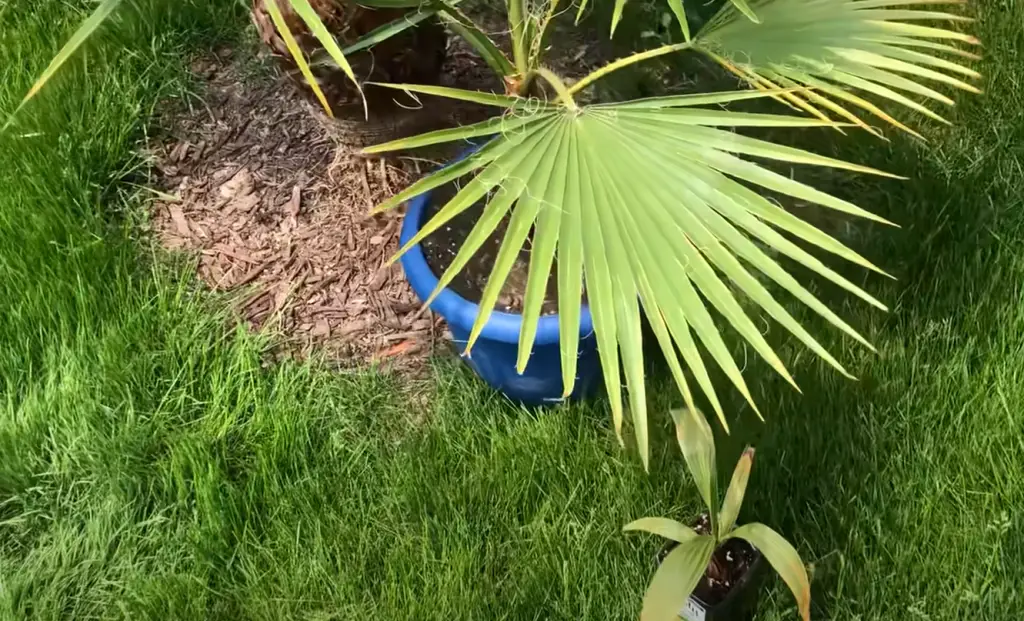
Additionally, most species of palm trees produce edible fruits or nuts such as coconuts and dates, which can be used either fresh or dried for culinary purposes. Many varieties of palms have long lifespans and can live up to 200 years – making them an excellent investment for landscaping projects. Palm trees are hardy and reliable plants, making them an essential part of any tropical ecosystem. [1]
Also, most species of palm tree have thick trunks with smooth bark which provide protection from the elements and act as support structures for the fan-shaped leaves.
Furthermore, some palms have medicinal properties and can be used to treat a variety of ailments.Overall, palm trees present a variety of special characteristics that make them an excellent choice for landscaping or outdoor decoration in warmer climates. With their beautiful fronds, shallow root systems, edible produce, and long lifespans. They are the perfect addition to your home or garden. Whether you live in a tropical climate or just want to add a touch of exotic beauty to your yard – palms will serve as an elegant centerpiece for years to come. [2]
Are Palm Trees Prone to Disease?
Palm trees may be vulnerable to a variety of diseases, such as Fusarium Wilt and Ganoderma Butt Rot. Fusarium Wilt is caused by the fungus Fusarium oxysporum, which affects many types of palms including Canary Island date palms, Washingtonia, Phoenix canariensis and Kentia Palm. The disease causes symptoms such as yellowing leaves that eventually drop from the tree or die outright. In some cases, the fungus will spread throughout the trunk of the palm tree and cause it to rot.
Ganoderma butt rot is another common issue with palms caused by a wood-decaying fungus called Ganoderma zonatum. This disease usually begins in the roots before spreading to the lower trunk and branches of the tree’s canopy. Symptoms include yellowing leaves, branch die-back and eventually death of the tree. [3]
Fortunately, most palm diseases are preventable with proper care. To help protect your palms from disease, make sure to water them regularly but not excessively, prune dead or dying fronds on a regular basis and fertilize annually.
Additionally, it is important to provide adequate sunlight for your palm trees as they require a good amount of light in order to thrive. If you notice any signs of disease such as discoloration or wilting leaves, call a professional arborist promptly for diagnosis and treatment options. With these preventive measures in place, you can help keep your palm trees healthy and reduce the risk of disease. [4]
Why Use Fertilizer For Palm Trees?
It is an essential part of any gardening activity. Fertilizing palms helps to keep the plants healthy and contribute to their growth rate, while also increasing their beauty. Additionally, it can help protect your investment in these plants by helping them grow faster and last longer.
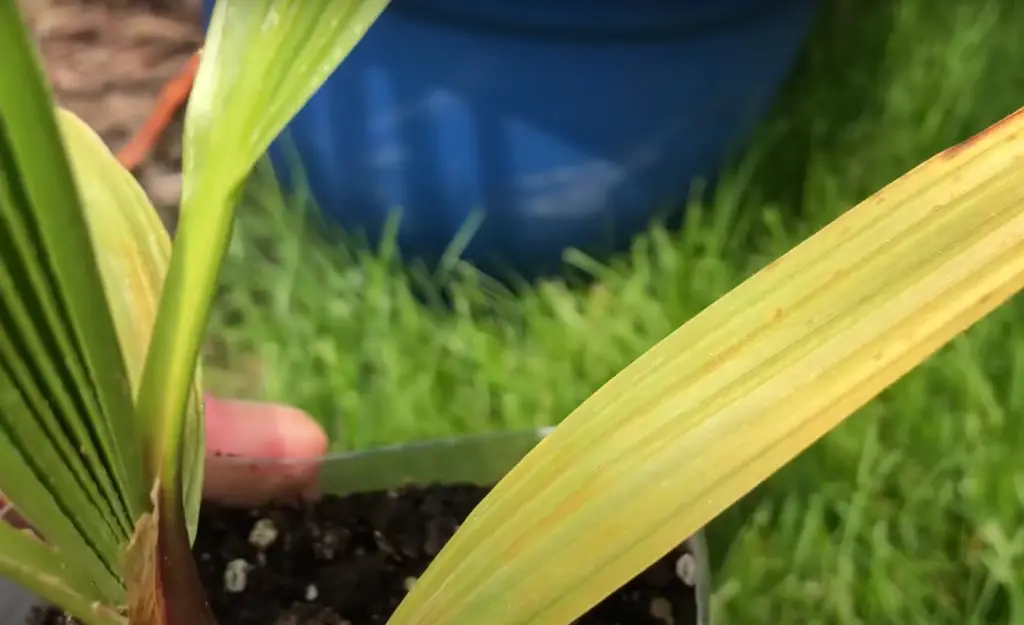
Palm fertilizer contains nitrogen, phosphorus, and potassium which are all essential nutrients required for healthy plant growth. Nitrogen helps promote leaf growth, phosphorus helps stimulate root development, and potassium aids the formation of strong cell walls that make the plant more resistant to disease. By providing these important nutrients, fertilizer ensures that palm trees will thrive in a variety of climates and environments. [5]
In addition to improving palm tree health and longevity, fertilizer can also help protect the tree’s root system from pest infestation. Fertilizers prevent the growth of harmful organisms such as nematodes, fungal diseases, and fungi that feed on roots. Additionally, regular application of fertilizer helps to boost the trees immunity against disease by providing additional nutrients to their roots.
Fertilizer for palm trees also helps to keep them looking vibrant and lush all-year round. By providing essential micronutrients, they can help produce more vibrant foliage with a powerful aesthetic appeal. Moreover, fertilizer helps the trees to stay strong and robust against environmental stressors such as windburn or drought.
Overall, fertilizing palm trees is an essential part of any gardening activity. By providing important nutrients, they can help promote healthy growth and improve the plant’s longevity while adding aesthetic appeal. Fertilizer also helps to protect the tree’s root system from pest infestation and disease. With regular maintenance, these plants can be enjoyed for many years to come. [6]
What Is Epsom Salt And What Is Its Composition?
Epsom salt, also known as magnesium sulfate, is a naturally occurring mineral compound composed of magnesium, sulfur and oxygen. Magnesium sulfate has been used for centuries to treat various ailments and remains a popular home remedy today. Epsom salt can be used to relieve pain, reduce inflammation and flush toxins from the body. It is available in both crystal form and as a fine powder which can be dissolved in hot water for use in baths or compresses. Many people swear by its therapeutic benefits! In addition to its many medicinal uses, Epsom salt can also be used in gardening and cleaning around the house. It is an inexpensive and versatile item with many practical applications. [7]
When Is Epsom Salt Good For Palm Trees?
Epsom salt is a great way to give your palm tree an extra boost of nutrients, helping it stay healthy and vibrant. Epsom salt can be used to help control the growth of weeds and other invasive species in the area around the palm tree. It can also improve the soil quality, making it easier for the palm tree’s roots to absorb more nutrients from the soil.
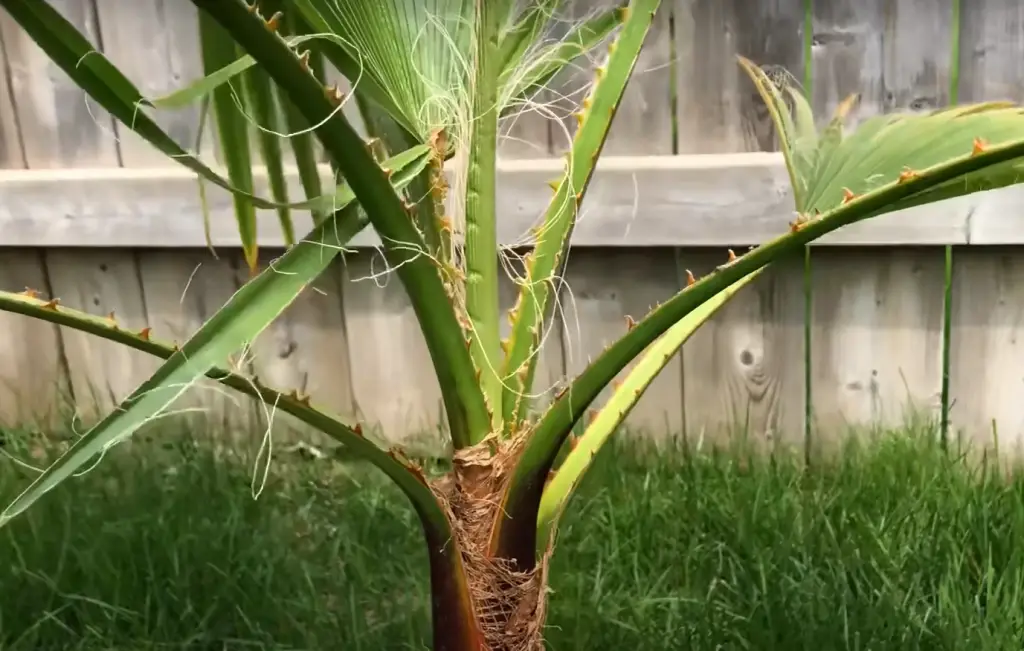
In addition, Epsom salt will help keep pests away from your palm tree by creating an inhospitable environment for them.
When using Epsom salt on a regular basis, make sure that you follow directions carefully in order to get the best results. Doing so will help ensure that your palm tree is healthy and thriving for years to come. [8]How To Use Epsom Salt For Outdoor Palm Trees?
Using Epsom salt on outdoor palm trees is a great way to promote healthy growth and development. The magnesium sulfate found in Epsom salt helps promote strong root development, improves water efficiency, and boosts the overall health of your trees. Here’s how you can begin using salt for your outdoor palms:
- Start by mixing 1/2 – 1 cup of Epsom salt into 3-4 gallons of water in a bucket or watering can. The amount used will vary depending on the size of your tree, so start with smaller amounts if it’s a young tree and increase as needed.
- Water the base of each palm tree with the mixture at least once every two weeks. You can also use the solution to water the entire area around your palms; this will help ensure that all of your plants receive the benefits of Epsom salt.
- Once a month, you should replace 1/4 cup of Epsom salt with 1 tablespoon of magnesium sulfate for more targeted nutrition. This will provide your palms with a healthy boost and keep them looking their best.
- Be sure to monitor your tree’s growth and development throughout the season to ensure it is thriving in its environment. If there are any signs of distress or nutrient deficiency, contact an experienced arborist as soon as possible for professional advice on how to care for your trees properly. [9]
How To Use Epsom Salt For Indoor Palm Trees?
Epsom salt is a great natural remedy for treating indoor palm trees. It can be used in a few different ways to help keep your palms healthy and looking great.
First, you can apply Epsom salt directly onto your plants or mix it into the soil. To do this, simply sprinkle about a tablespoon of Epsom salt on top of your indoor palm tree’s soil surface and lightly water it in. This helps provide essential nutrients to the plant, such as magnesium and sulfur.
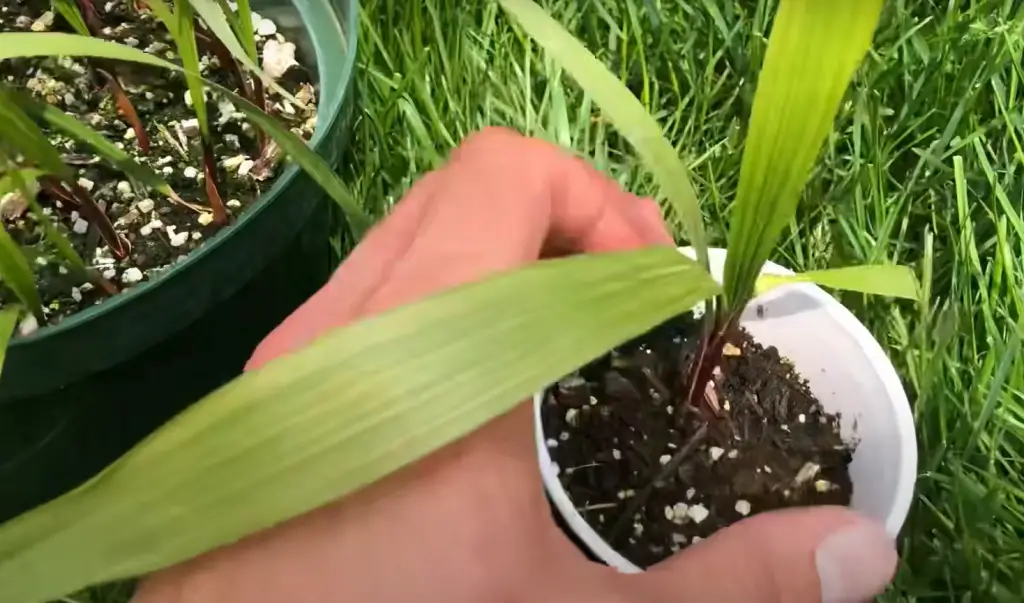
You can also make an Epsom salts solution that you use to water your indoor palm tree once every two weeks. For this solution, mix 2 tablespoons of Epsom salts with one gallon of warm water and stir until the salts are completely dissolved. Then, simply water your plant with this solution.
Finally, you can make Epsom salt foliar spray that you can use to mist your plants every two weeks.
Then, transfer the solution into a spray bottle and lightly mist the leaves of your indoor palm tree every two weeks or when needed. [10]Following these simple steps will help keep your indoor palm trees healthy and looking great.
Other Uses For Epsom Salt In The Garden
Epsom salt can also be used to discourage slugs and pests from munching on your plants. Sprinkle a line of Epsom salt around the base of plants, or mix a solution of 1 tablespoon of Epsom salt per gallon of water and spray it around the affected area.
Plus, you can use Epsom salt for fertilizing roses and other acid-loving plants such as azaleas, rhododendrons, evergreens and hydrangeas. Mix 2 tablespoons of Epsom salt with a gallon of water and apply directly to the soil around each plant. For best results, repeat every two weeks throughout the growing season. You can also make a spray to rid your garden of weeds by combining 1 gallon of water, 1 teaspoon of liquid dish soap and 2 tablespoons of Epsom salt in a spray bottle. Shake the bottle to mix it all together and spray directly onto the weeds. This will not only kill weeds, but it can also help prevent new ones from growing.
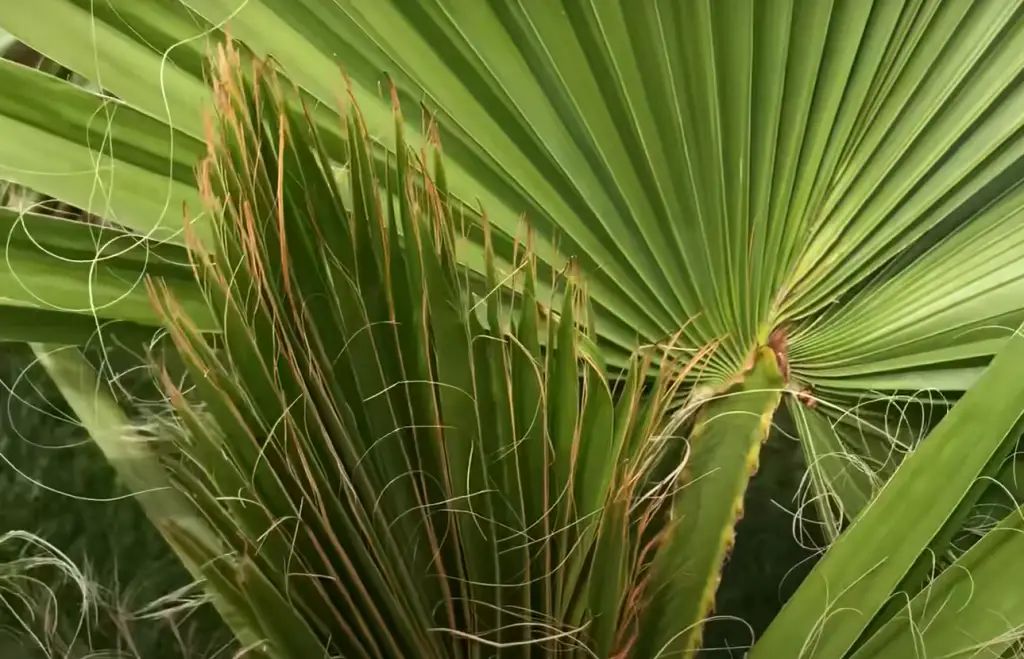
Epsom salt can be an invaluable tool for gardeners looking for natural and cost-effective ways to improve their gardens. With just a few simple ingredients, you can keep your plants healthy and thriving for months! So don’t forget to add some Epsom salt to your gardening arsenal. [11]
What Other Actions to Take When Helping Palm Trees?
Follow these steps and make your palms look their best and remain healthy.
Fertilize
When helping palm trees, be sure to use a slow-release fertilizer in the springtime or early summer for healthy roots and foliage. Make sure to follow package directions or consult your local garden center expert for guidance on how much to use.
Prune
It’s important to prune your palm tree regularly as part of helping it stay healthy and looking its best. This involves cutting away dead leaves and fronds, as well as selectively removing some branches that are crossing over one another or becoming too thick at the top of the tree.
Water
Helping palm trees also means providing them with enough water during dry periods when there is no rainfall. Make sure to deeply water the tree during these periods, as this will help ensure a strong and healthy root system.
Mulch
Adding mulch around the base of your palm tree can be beneficial in helping it stay healthy. This helps conserve moisture and insulates the roots from temperature fluctuations.
Protect from Cold
If you live in an area that experiences cold temperatures, it’s important to take steps to protect your palms from frost damage. This might include wrapping them with a protective covering or relocating them inside for the winter months if necessary.
Control Pests
One of the most common problems facing palms is pest infestations, including mites, scale insects, and mealybugs.
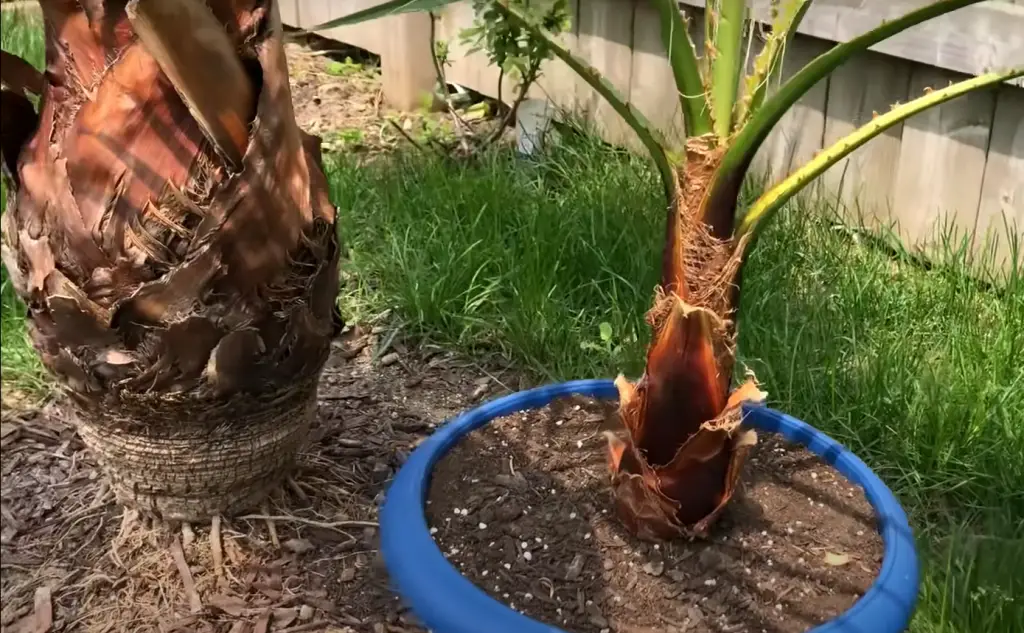
Helping palm trees also means keeping an eye out for these pests and taking steps to control them if necessary, such as spraying with pesticide or introducing natural predators like ladybugs.
Regularly Check Health
As part of helping your palm tree stay healthy, make sure to check it regularly for signs of disease or insect damage so that you can take action quickly if needed. This may involve checking the roots, leaves, and trunk of the tree for any abnormalities. [12]
FAQs
How much Epsom salts do I need for a palm tree?
The amount of Epsom salts needed for a palm tree depends on the size and age of the tree. Generally, 1/4 to 1/3 cup of Epsom salts should be mixed with 2 gallons of water and applied around the base of your palm tree. This mixture should be applied every 3-4 months to ensure healthy growth. However, if your tree is showing signs of yellowing or nutrient deficiencies, you may want to increase the dosage slightly. It is important to check with a local expert for specific advice about fertilizing your particular species of palm tree.
Why is Epsom salt good for palm trees?
It is a great source of magnesium, which is an essential nutrient for palm trees. Magnesium helps to promote strong root growth and can help prevent diseases such as bud rot and chlorosis. Additionally, Epsom salt helps to balance the pH levels in the soil, making it more hospitable for palms. It also increases micronutrient absorption and encourages better water retention in the soil.
What is the best fertilizer for palm trees?
The best fertilizer for palm trees is a slow-release, nitrogen-rich fertilizer. It should be applied in the spring and summer months twice a year. For new palms, it’s important to use a high-quality starter fertilizer at planting to ensure good root development and establishment. It’s also important to use an appropriate amount of fertilizer for your particular palm tree species as too much can damage the roots or cause other issues with the plant.
Palm trees also benefit from occasional deep root feeding, which helps improve soil aeration and promote healthy growth. Additionally, applying magnesium sulfate (Epsom salts) every few months can help correct yellowing leaves caused by magnesium deficiency. Finally, regularly spraying palm trees with water helps keep the foliage healthy and pest-free. It’s important to follow the directions on the fertilizer label for best results.
What plant should you not use Epsom salt in?
Generally speaking, Epsom salt should not be used in any plant that is sensitive to sulfates, such as azaleas, rhododendrons, and camellias. It can also be detrimental to plants that require acidic soils such as blueberries and potatoes. Also, avoid using Epsom salt on vegetable or herb gardens because the high levels of magnesium may interfere with the absorption of other minerals essential for growth. Finally, too much Epsom salt can cause a build-up of salts in the soil which can prevent proper water uptake by roots so use sparingly if at all when caring for indoor plants.
Useful Video: How to Care for Palm Trees With Epsom Salt
The Bottom Line
We hope that this blog post has given you the information and instructions you need to properly utilize Epsom salt in your garden. If used in the correct quantity at regular intervals, it can be extremely beneficial for palms and other plants. Of course, make sure to properly research other methods of fertilizer as well. It’s best to use a combination of natural fertilizing efforts – though, nothing beats the convenience and effectiveness of using reliable old Epsom salt! Keep in mind that adding too much or not enough can limit any positive effects, so always pay attention when you are following directions and caring for your plants.
References:
- https://praysweateatrepeat.com/2022/09/13/3-characteristics-of-palm-trees/
- https://kidadl.com/facts/characteristics-of-a-palm-tree-everything-you-need-to-know
- https://www.onetripptree.com/4-diseases-that-can-affect-palm-trees
- https://ipm.ucanr.edu/PMG/PESTNOTES/pn74148.html
- https://ecocation.org/palm-tree-fertilizer/
- https://www.milorganite.com/blog/trees-shrubs/fertilizing-palm-trees
- https://www.healthline.com/nutrition/epsom-salt-benefits-uses
- https://gardentabs.com/why-epsom-salt-is-great-for-palm-trees/
- https://anestwithayard.com/epsom-salt-for-palm-trees/
- https://gardeninghood.com/how-to-apply-epsom-salts-to-palm-trees/
- https://www.thesaltbox.com.au/news/8-amazing-uses-of-epsom-salt-for-your-garden/
- https://www.allaboutgardening.com/palm-tree-care/





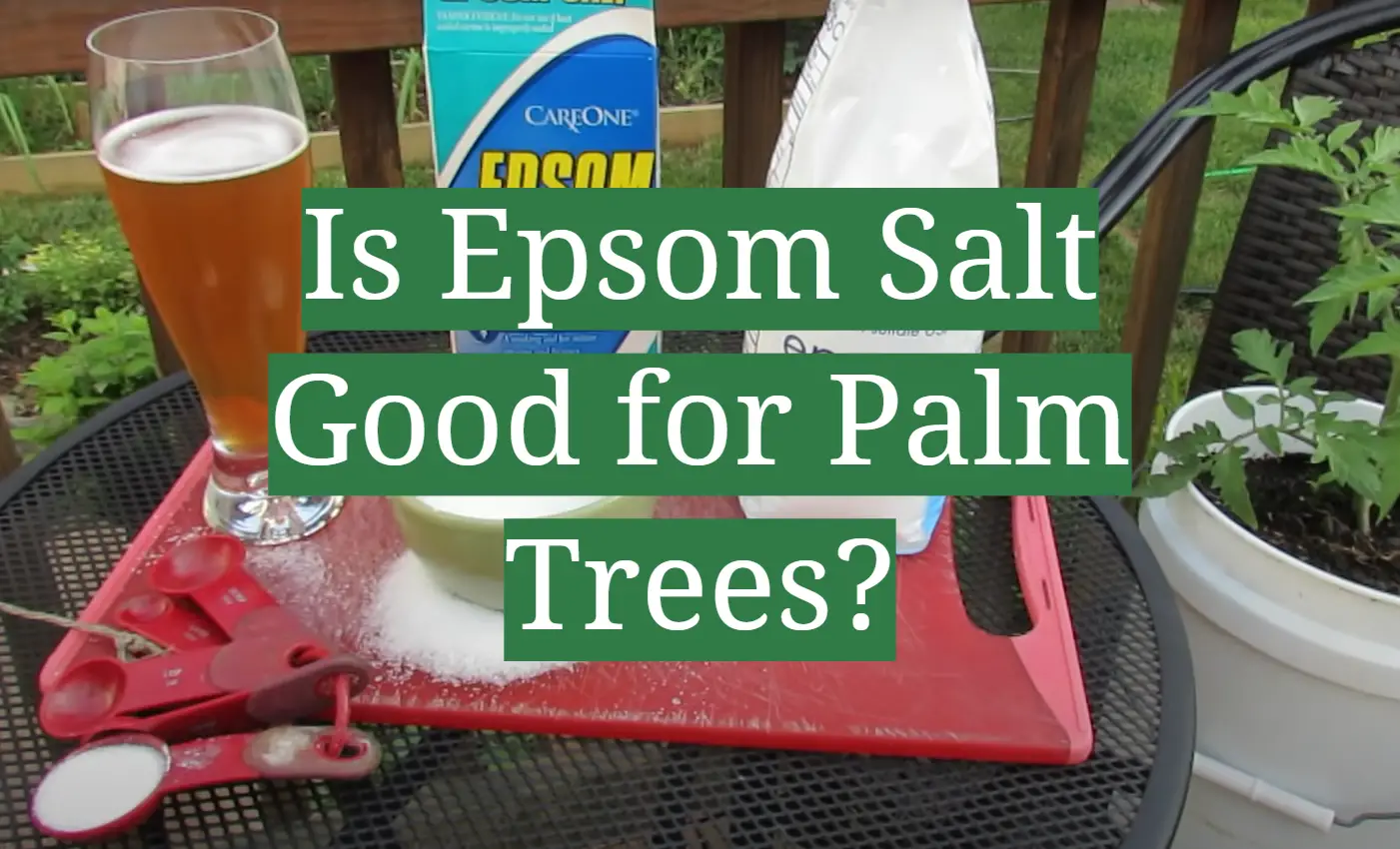




Leave a Reply
View Comments